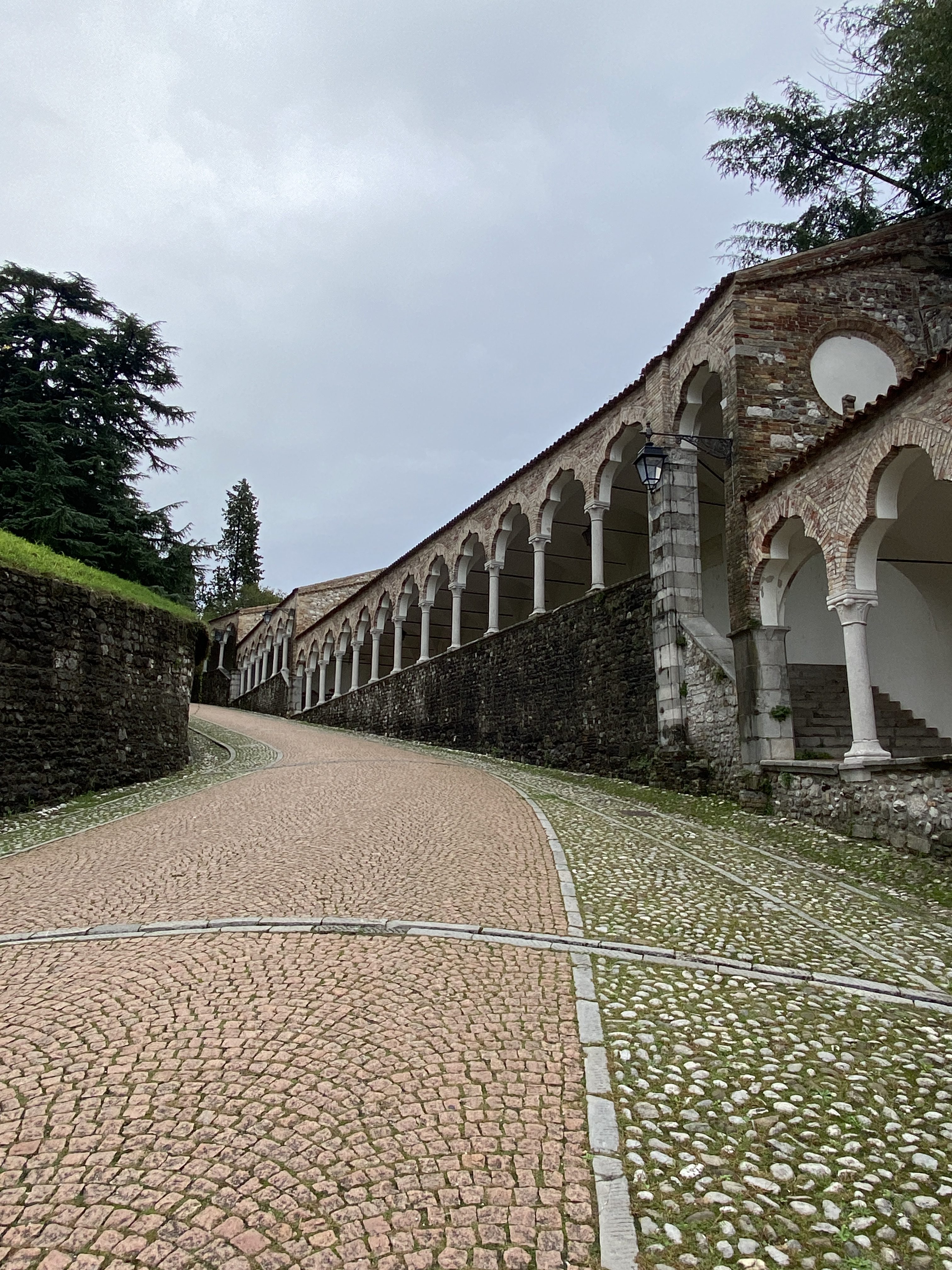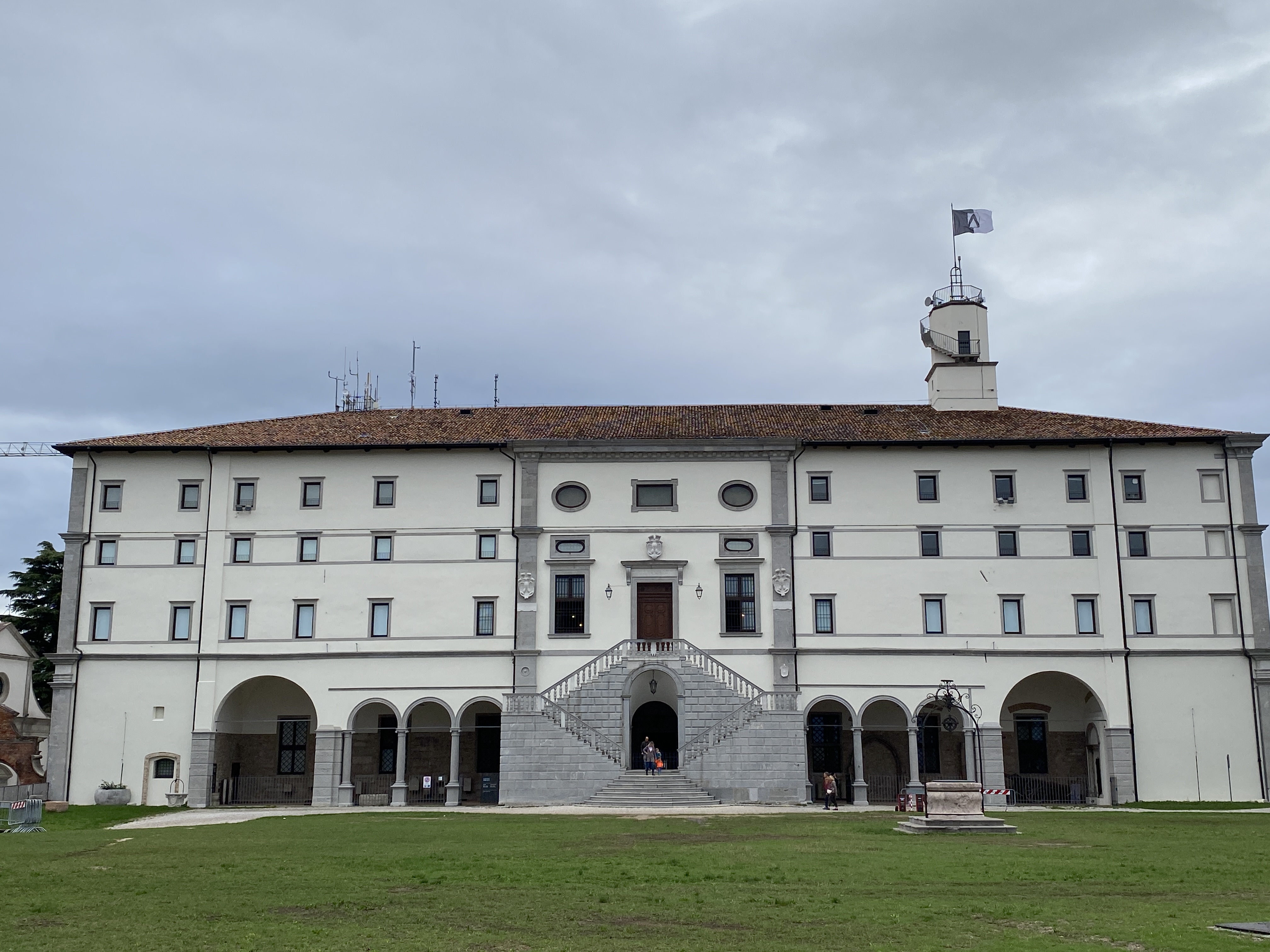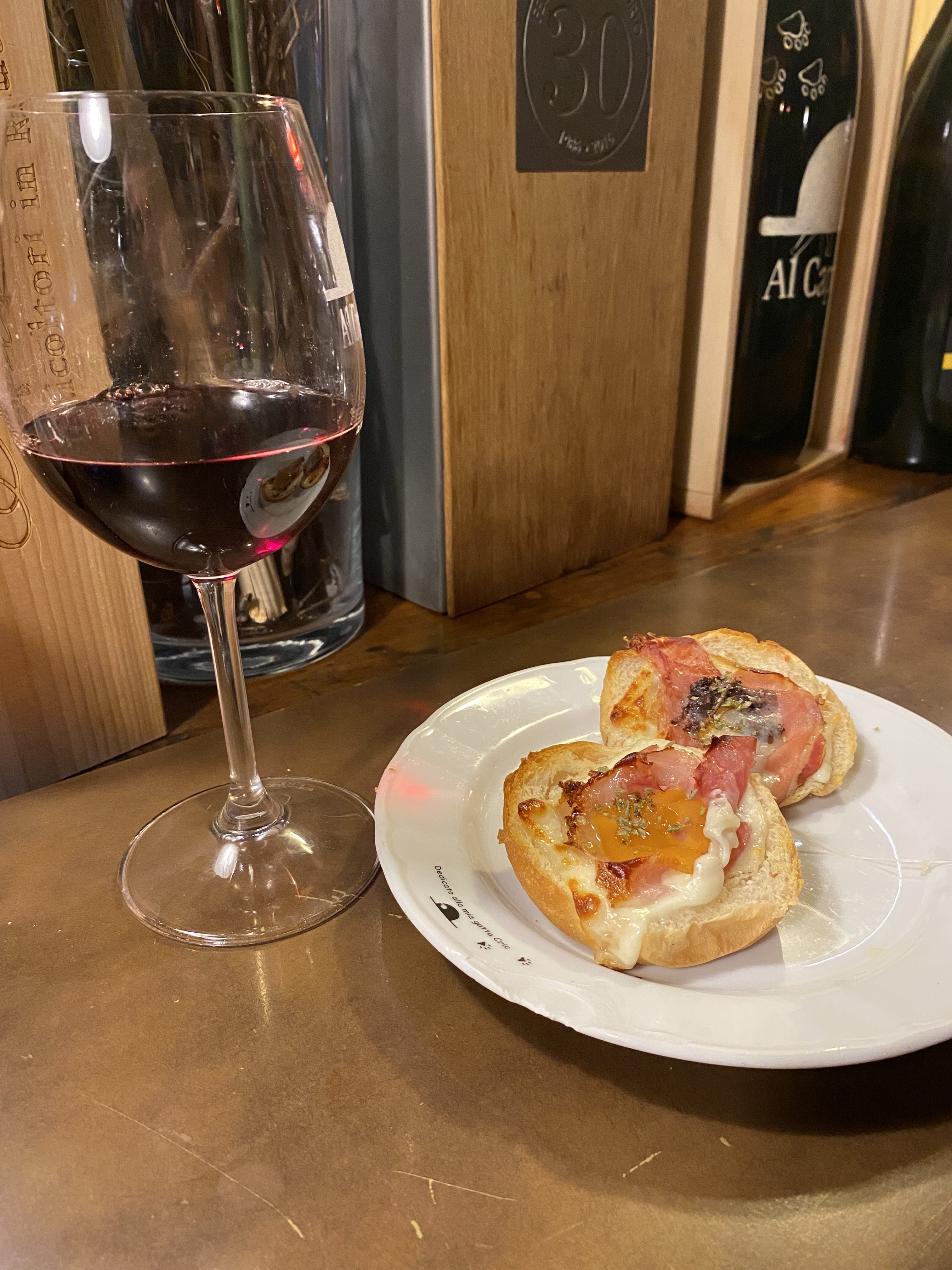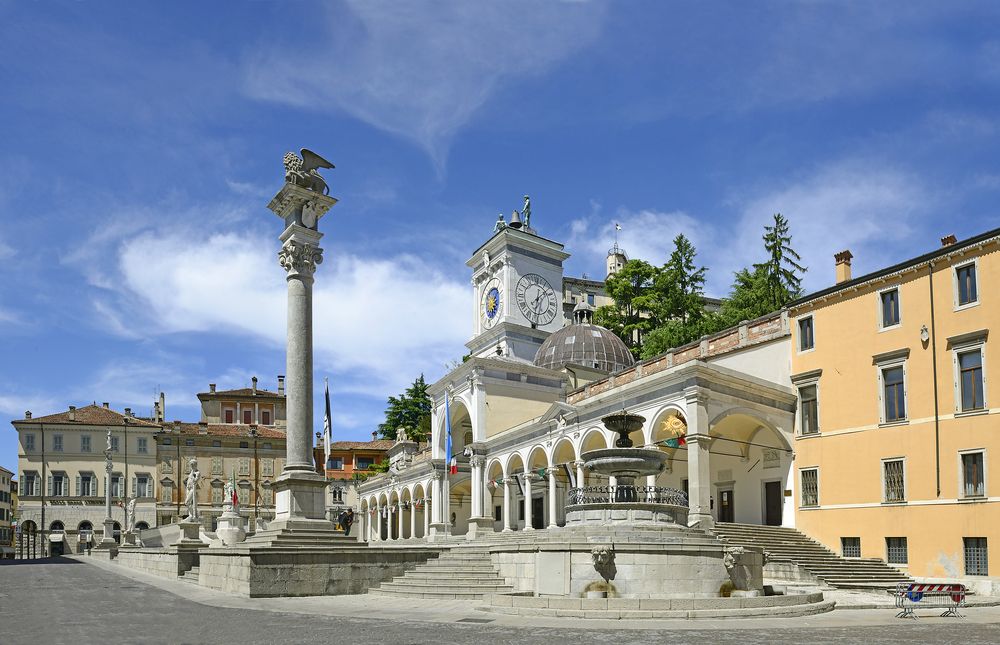
Udinese seldom feature among the teams mentioned when most people think about Serie A.
The same can be said about Udine, which has a legitimate claim to be one of Italy’s hidden gems.
Tucked away in the middle of the Friuli Venezia Giulia region, Udine combines a rich – if often tragic history with superb architecture and art. This being Italy, stunning culinary treats and tremendous wines are readily available.
Friuli had long been on Destination Calcio’s list of places to visit, but in all our wisdom, we decided to base ourselves in Padua this weekend to take in the Padova vs Vicenza derby on Sunday.
When I say our, I obviously mean my, as this was the first solo trip of the season, with David and Emmet enjoying a well-deserved rest in sunny London.
The easiest way to reach Udine from Britain is to fly to Trieste, just over an hour away by train or car.
However, being based in Padua meant flying into Venice Marco Polo from London Stansted, before taking a coach to Venice Mestre station and then a train to Padua.
Saturday morning meant an early start to catch the train to Udine, approximately two hours away from Padua.
With no direct service between the two cities, you are required to change in Venice, and while there are several services on the line, travel times vary. The fast train takes about 15 minutes to Venice and then just over 90 minutes to Udine, but slower services can take over two-and-a-half hours.
A ticket costs around €15 and is easily purchased via the Trenitalia app, which I did while treating myself to a much-needed coffee at Padua station.
While the stretch between Padua and Venice is somewhat unremarkable, the scenery is absolutely spectacular as the train leaves behind Veneto’s plains and heads towards the Carnic Alps and over the rivers Piave and Tagliamento.

The landscape is punctuated by rugby grounds, a reminder that Veneto’s oval ball tradition remains as proud as their round ball one.
Speaking of which, the services to Udine take you through the Treviso province and the town of Conegliano, the birthplace of one Alessandro del Piero.
Stunning as the scenery is, it conceals a grim history.
Bordering Austria and Slovenia, the mountains of Friuli were historical battlegrounds in World War I and Udine was colloquially known as the War Capital.
In 1976, meanwhile, the region was hit by a devastating earthquake that displaced almost 160,000 people.
Friuli has been rebuilt since and there’s almost no trace of the tragedy that unfolded, bar a handful of memorials across the regions.
Once in Udine, it was time for a much-needed coffee, and I was spoilt for choice, with the old town a mere 10-minute walk away from the station.
A cappuccino and a croissant later, I found myself in Piazza della Liberta, looking at the Loggia del Lionello and Torre dell’Orologio—the town hall and an imposing clock tower.
Built in the Venetian-Gothic style, the square is reminiscent of Piazza San Marco in Venice and features the impressive Loggia di San Giovanni, a majestic Renaissance building.
The square, like most of Udine, is dominated by the castle standing directly above it.
Even on a day when the weather was quintessentially British, the castle offered spectacular views over the town and its impressive and varied architecture. Udine was under Venetian control for three centuries until 1797, before the French, Italians, Austro-Hungarians and Germans all ruled at various stages over the next 150 years.
Architectural elements of Udine’s colourful past remain throughout its building.
As I made my way down from the castle, I wandered through the old town’s impeccably clean and narrow streets, all of which carry bilingual signs in Italian and Friulian.


One of Italy’s five autonomous regions, Friuli is a proud place inhabited by proud people and Udine is no different. I lost count of the amount of regional flags I saw hanging through its streets.
Having resisted the temptation of stopping for local treats at one of the several bakeries I came across, I made my way to Parco Moretti.
As a self-confessed stadium geek and a man known to like a pint, visiting the site where a football ground was built over land owned by a brewery seemed a must-do.
My walk took me to the southern edge of the park, where the original arches that led into the ground are the only structure left standing of the Stadio Moretti, home of Udinese until 1976.
Nearby, I stumbled upon the old walls of the Moretti brewery and then returned to the old town, which was considerably busier than when I’d left.
Unlike other cities in Italy, tourists seem to be almost absent in Udine. That is not to say there are no visitors, but if you want to avoid throngs of tourists bulldozing their way through an old town and repeatedly asking you to move as you’re blocking their Instagram shot, Udine may just be the place for you.
The locals, however, were out in force and treating themselves to an early aperitivo.
Spritz may have been made famous in Venice, but it originated in Udine. To this day, spritz bianco – white wine mixed with mineral water in a wine glass – or its red counterpart remains the drink of choice of the locals.
By 11am, cappuccino and croissants had been replaced by spritz and nibbles on seemingly every bar I walked past.
Mindful of the need to blend in with the locals, I took a seat at Prosciutteria IE just off Piazza della Liberta. This restaurant offers a fantastic array of wines—priced from around €2.50 for a glass—accompanied by so-called cicchetti—Friuli’s version of tapas.
Tempting as it was to join the locals sitting outside under the covered walkway, I told myself I was here for work and stuck to mineral water instead.

That was much to the puzzlement of the smartly dressed gentleman next to me at the bar, who, just as I placed my order, was asked whether he “fancied the same again?”.
Polishing off two spritzes by 11 am must surely be why Friuli ranks in the top eight regarding average life expectancy in Italy.
It was a similar picture a short distance away in the central Piazza Matteotti, where bars line up on three sides of the square. Having diligently stuck to an espresso at Caffe Hausbrandt, I finally had enough of watching people drink and decided to head to the stadium instead.
Formerly known as Stadio Friuli, the Bluenergy Stadium is on the outskirts of Udine but easily reachable by public transport. I hopped on bus No. 9 for the 20-minute ride to the ground.
The stadium underwent a complete revamp between 2014 and 2016, during which only the main stand with its iconic arc was preserved, and the capacity was reduced to just north of 25,000.
One of a handful of Serie A stadiums to be owned by the club rather than by the city council, the Friuli is a trailblazer in Italy.
The result is an arena that offers one of the best views in Serie A, which came in handy on Saturday when Jordan Zemura struck home a superb free-kick as Udinese beat Lecce 1-0 to return to winning ways after two consecutive defeats.
Despite being beset by injuries, the Zebrette are flying high in Kosta Runjaic’s first season in charge and went into the international break fifth on the Serie A table, just three points adrift of league leaders Napoli.
Runjaic was in a buoyant mood at the post-match press conference, and I was similarly optimistic about catching a bus back to the centre of town as I made my way out of the stadium.
Unfortunately, despite the match being long over, traffic remained virtually at a standstill and with no sign of buses forthcoming, I embarked on a 50-minute walk back to the old town.

The detour meant I’d missed the fast train back to Padua, but it offered me the chance to stop at Locanda al Cappello, a pleasantly old-fashioned hotel with a superb bar downstairs serving local wines and tasty snacks.
With tables outside and inside all rammed, I found a spot by the bar where a glass of local Pinot Noir and two delicious tartines set me back a very reasonable €10.
From there, it was finally time to head back to the station and catch the train back to Venice and onto Padua. Having clocked up 13 miles over 16 hours, I looked forward to walking slightly less the following day.
How wrong I was.
We’ll take a break from travelling due to the international break as Italy takes on Belgium and Israel in the Nations League, but we’ll be back on the road next week.
You can read about our previous trips to Milan and Bergamo, Bologna, Como and Monza, Genova, Campania and the Northern regions.
There is no better way to spend your weekends as long as the destination is calcio.
Watch more of our Weekenders on DC TV:
Related Articles
Related Articles
We get a local take on what's hot in Cremona - where to eat and drink, sights to see and handy hints that might not be in the tourist guides.
The Artemio Franchi will always be the main reason calcio fans head to Florence but there is one other thing that must be on the to-do list.
After the final whistle is blown at Stadio Giuseppe Sinigaglia, there is no better place to unwind than Bellagio.





